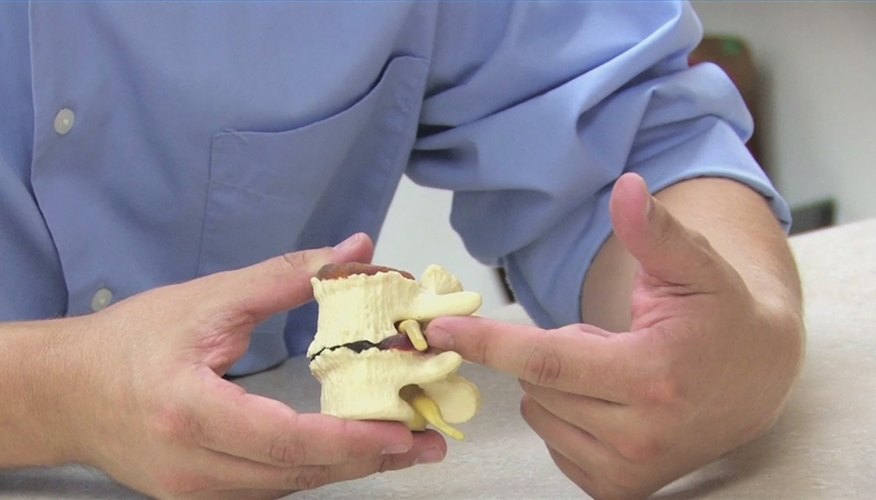Hi, my name is Dr. Hans Delfo, a doctor of chiropractic in Los Angeles, California. I want to talk to you today a little bit about how to treat a sciatic nerve injury. The sciatic nerve begins at the fourth lumbar segment and continues down to the third sacral segment. Now, there are three main causes of sciatic pain. The first cause of sciatic pain and the most severe is a disc herniation or disc bulge. What happens in this case is that the center of this disc is liquid, nucleus pulposus. This liquid protrudes through the tougher annular fibers that surround it. This protrusion can cause muscle spasm or pressure on the nerves which would cause the pattern of sciatic pain. The second cause of sciatic pain is Piriformis Syndrome. The piroformis muscle runs from the sacrum through the pelvis and connects to the femur. It is the main external rotator of the leg. In 90 percent of people, this sciatic nerve runs right through teh Piriformis Muscle. If there is any stretching of the muscle or spasm, it can put pressure on that sciatic nerve causing the pattern of sciatic pain. The third cause of sciatic pain is a pelvic misalignment. The pelvis is made up of three bones, the sacrum, the ischium and the ilium. These three bones work together in a Figure 8 when we move or walk. Sometimes one side can get stuck and the other in compensation can get stuck in the opposite direction. This malposition can actually cause stress on the sciatic nerve and create sciatic pain. The best thing you can do if you have sciatic pain is to go visit your doctor of chiropractic. Chiropractors are neuromuscular experts that are trained to identify the cause of sciatic pain. First and foremost, the chiropractor will do a comprehensive exam, take a history and try and find out the cause of the pain. If it is determined that it is a chiropractic case, these are some things that you might expect. First, is an adjustment. What we will look for is any kind of malposition with the spine or the pelvis. Resetting those malopositions in the form of an adjustment can help take pressure off these nerves. Second, we will look to see if it is a Piriformis muscle issue. If it is, we will teach you how to do some stretching and some other therapies to help alleviate this pain. We can also employ things such as heat or ice, ultrasound or electrical stimulation to the area to help relieve that muscle spasm. My name is Dr. Hans Delfo, and thank you for watching my video on treatments for sciatic nerve injuries.
How to Treat a Sciatic Nerve Injury
by Hans C. Delfo, D.C. / in Health
